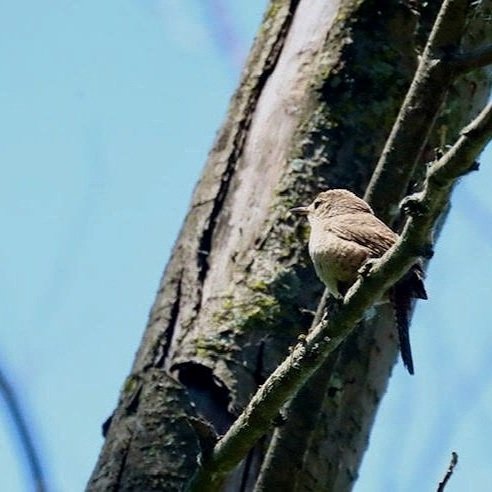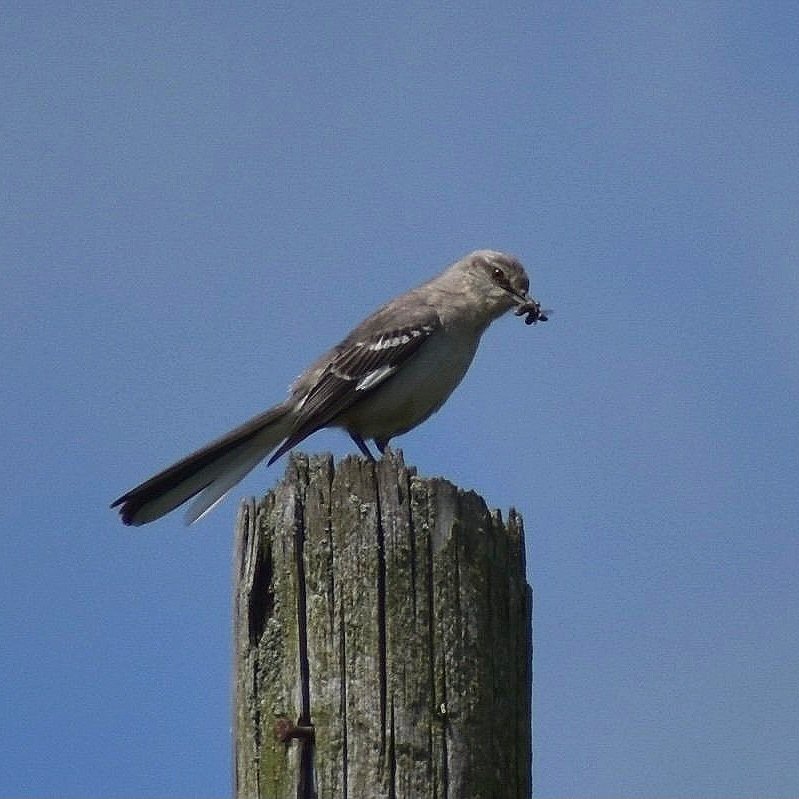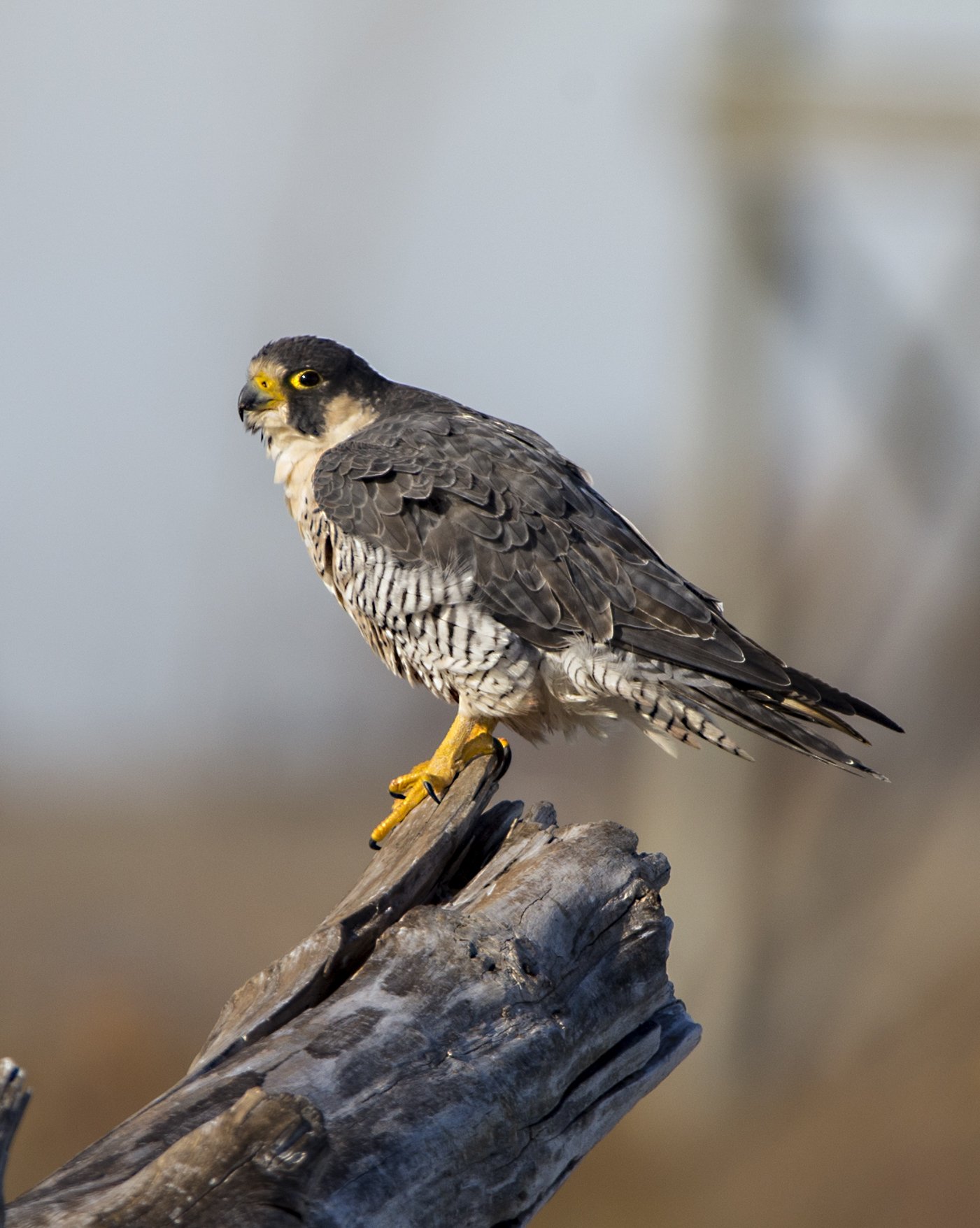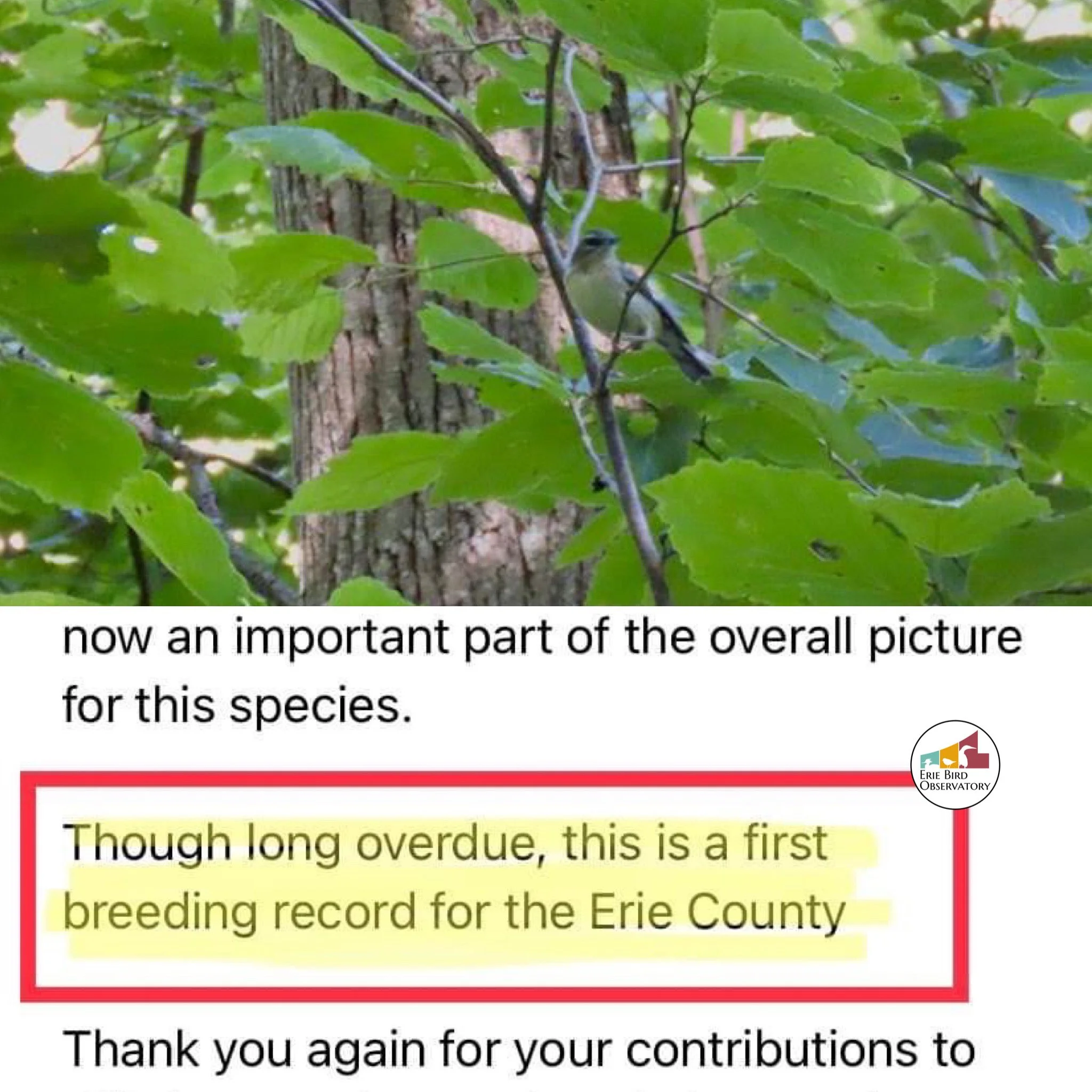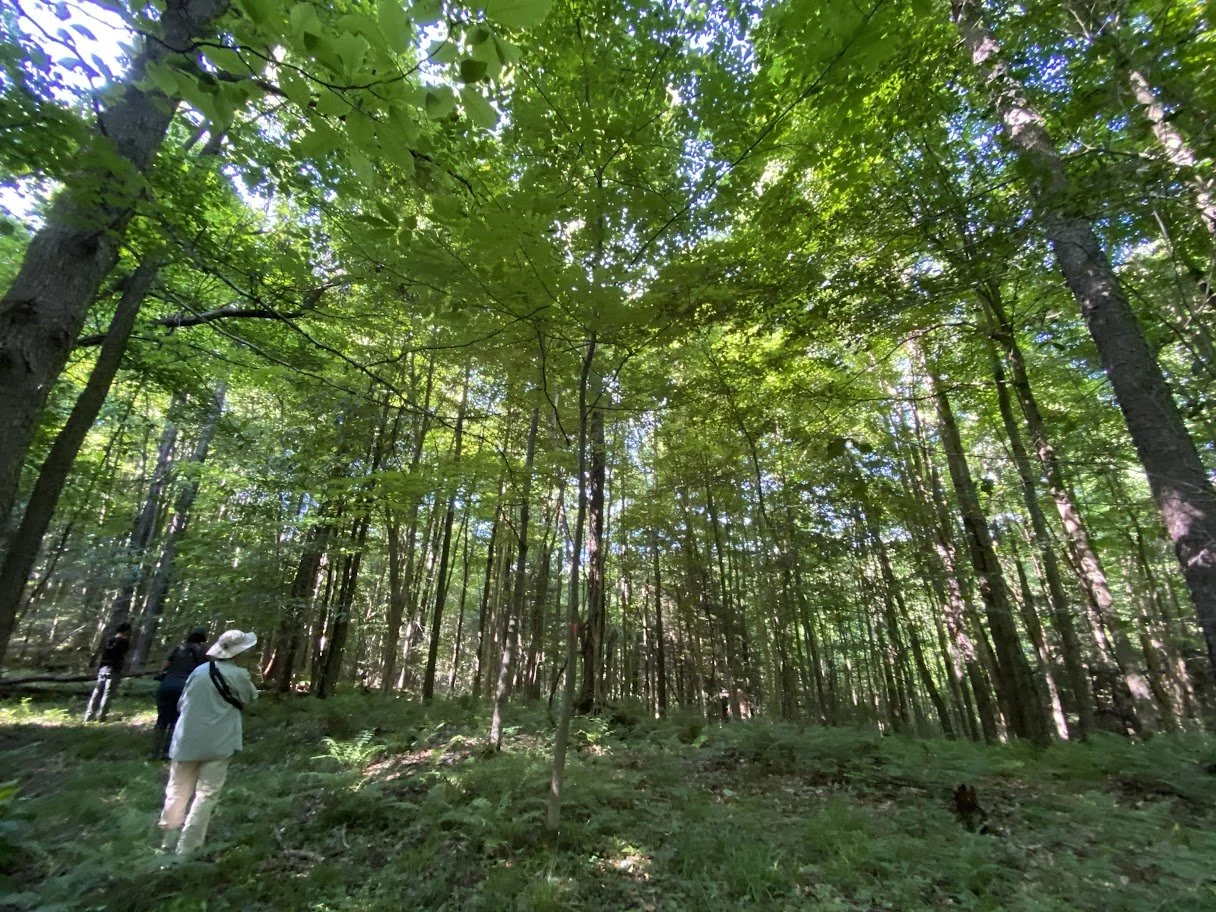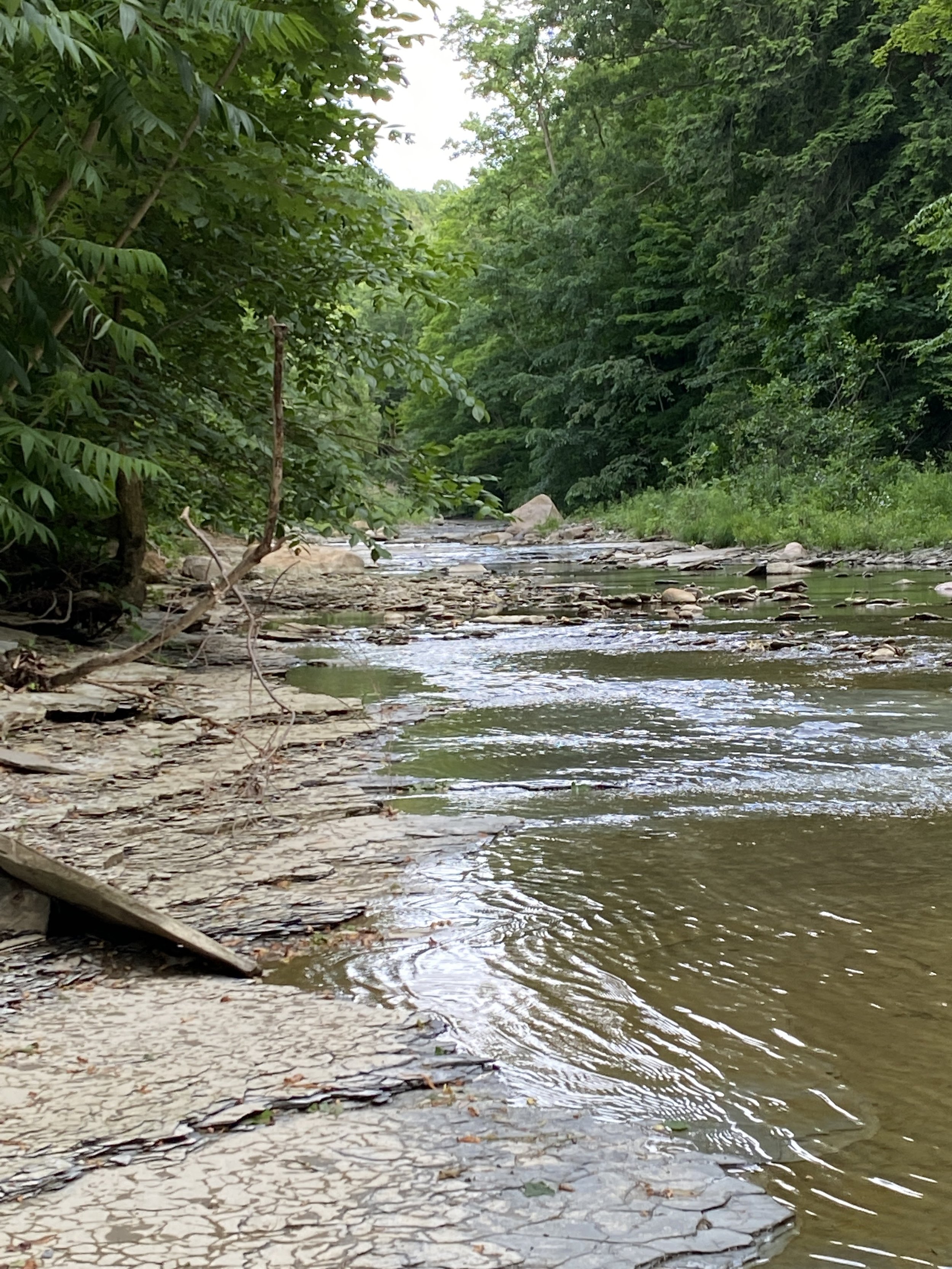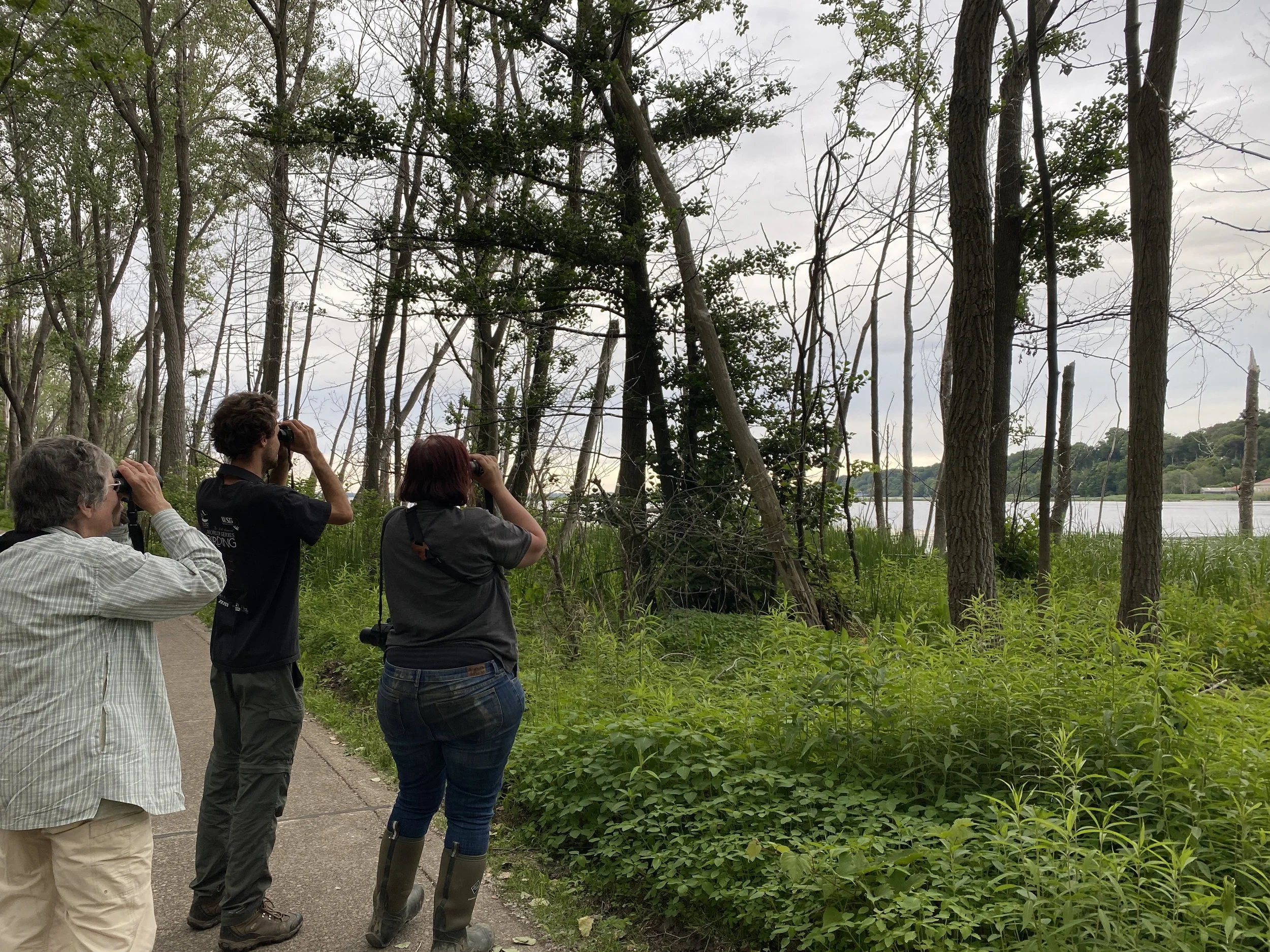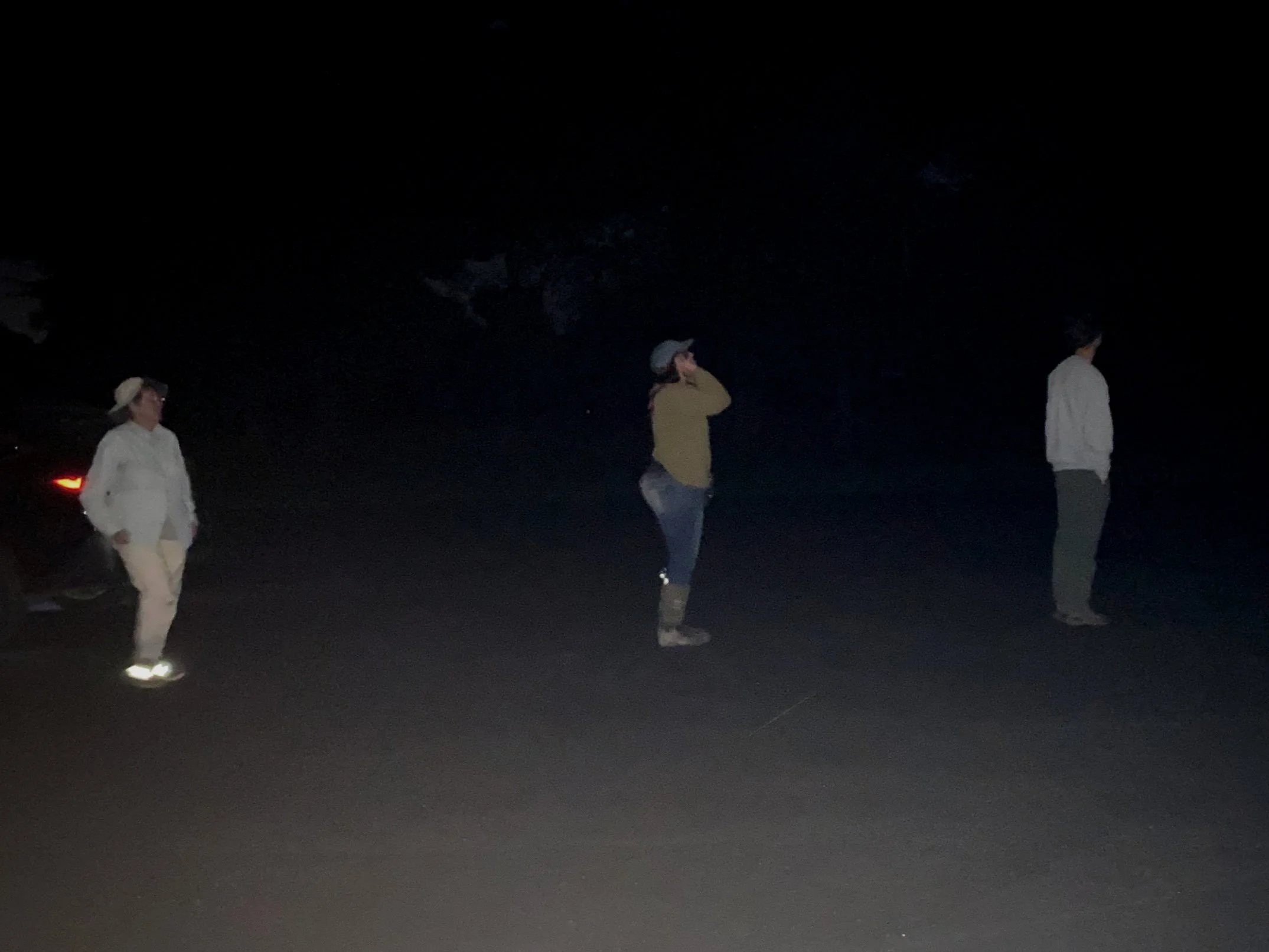Pennsylvania is for Plovers’ 2022 Breeding Bird Blitz
Over the weekend of June 17th - 20th, 2022, the Pennsylvania Society for Ornithology held its second annual PA Breeding Bird Blitz for Conservation. During the blitz (B4C), teams of birders across the state compete to find the most bird species in the county of their choosing during any given 24-hour period. In addition to being a fun competition, the B4C generates valuable information on the abundance and distribution of Pennsylvanian breeding birds as well as raises money for avian conservation organizations across the state. This year’s donations will be evenly divided between the Ned Smith Center for Nature and Art, the Willistown Conservation Trust, and our very own Erie Bird Observatory!
Donations will be accepted through July 15th, 2022. For more information, please go to: https://www.breedingbirdblitz.org/donate-teams
Due to his experience competing in New Jersey Audubon’s World Series of Birding as well as his all-around birding prowess, Erie Bird Observatory (EBO) asked Joshua Heiser to lead our team to victory in this year’s blitz. His team, which he named “Pennsylvania is for Plovers” (and insists “plovers” be pronounced like “lovers” 😉) birded Crawford County on Saturday, June 18th, 2022 and Erie County on Sunday, June 19th, 2022. The following is part 2 of a two part series detailing EBO’s experience competing in this year’s blitz. We hope that you enjoy!
Pennsylvania is for Plovers’ 2022 Breeding Bird Blitz
DAY 2: Erie Edition
by Joshua Heiser, 2022 EBO Intern
Following a highly successful day of birding in Crawford County, I was a little worried about our big day in Erie. My schedule had only allowed me to scout out a few spots in the county and there were several species for which I had no reliable locations. Joining me for the second day of the blitz was local birding guru and fellow Erie Bird Observatory (EBO) employee, Katie Andersen. While the Crawford Contingent had been busy blitzing the day prior, Katie had been busy scouting Erie County. Unfortunately, we had not had the time to compare notes or to create an informed route before meeting up that morning, which admittedly was cause for concern. I knew that not having a comprehensive plan, particularly for the early morning hours, was a risk and one that could potentially tank a big day.
The plan was for Katie and I to meet at the Tom Ridge Environmental Center (TREC) at 4:45 am to snag some nocturnal Presque Isle birds when the park’s gates opened at 5:00 am. Our other two team members, Ruth Swaney and Sarah Sargent, would be joining up with us later. I arrived at 4:50 am and misreading her text in my sleep-deprived state, drove to the second lot on the peninsula instead of the second TREC lot where Katie was parked. My confusion not only cost us a Barred Owl calling at the TREC, it delayed our meet-up time to 5:15 am, right when first light began to hit and our nocturnal friends ceased to call. We hurried to Beach 9 to intercept a calling Eastern Whip-poor-will, but arrived too late.
We were able to add a few songbirds along the way though including a Marsh Wren at Thompson’s Circle and a Golden-crowned Kinglet that we were surprised to find singing on Pine Tree Trail. I heard an interesting call as we were driving around Fry’s Landing and proceeded to get out of the car. While I was listening to what ultimately turned out to be a Gray Catbird (those crazy mimids!), Katie suddenly shouted from the passenger seat, “Woodcock! Woodcock!” I whipped my head around to just miss the forest-dwelling shorebird as it flew behind the trees. Presque Isle yielded no more new species for us after that and I was feeling pretty bummed about our team missing two tricky birds this early on in the blitz. We begrudgingly headed back to the TREC parking lot where we had planned to meet up with fellow blitz team leader, Ruth Swaney, who would be joining the #PA4Plovers team for the day.
While we waited for Ruth to arrive, Katie and I took some time to determine where we were going next. The initial idea had been to hit Erie Bluffs after Presque Isle, but without a clear game plan, I was worried we might waste too much time driving around. Looking at one of the maps that Katie had created the night prior, I suggested that we head south first. “We could try for ravens and the Winter Wren, and then hit Jamie’s place.” This was a big risk, as neither of us had scouted that area, but Katie agreed. By now, it was 6:15am— we had our game plan, but Ruth was running late. As time was of the essence, we thought it best to just have Ruth catch up with us later. We piled into Katie’s car and off we went!
Our decision to head south paid off in spades. We started down some backroads about five miles west of Waterford to an area where a family of ravens were known to frequent. While we didn’t find the ravens, driving along with the windows down netted us a ton of new species: Brown Thrasher, Northern Rough-winged Swallow, and Field Sparrow to name a few. We pulled over at an overgrown farm field and immediately picked up Savannah Sparrow, Bobolink, and Eastern Meadowlark - the trifecta of expected grassland birds. A Magnolia Warbler that sang right as we drove past it was perhaps the best surprise as it’s a species more common in the eastern end of the county. We then turned onto Leacock Road, where a Winter Wren was known to be on territory. The road cuts through a sizeable grove of hemlocks— so even though we had to wait 25 minutes for the Winter Wren to sing, we also added several quality coniferous species, including Blue-headed Vireo, Dark-eyed Junco, and Purple Finch. It was now 7:45 am and we were already at 64 species!
Our next location was Jamie Hill’s property in Waterford. Jamie is a well-known birder and his property, with its large lake and several acres of forested shrub habitat surrounding it, is one of the premium birding sites in the area. I had emailed him the week prior, asking for permission to visit. He had responded affirmatively with a tantalizing list of breeding birds at his property that included Northern Waterthrush and Alder Flycatcher. As we headed up the long driveway, Jamie provided us live text updates from his back deck. “Listen for Field Sparrow in that first stretch. . . Osprey eating Goldfish at railroad tracks to the left . . . All 5 Osprey in nest now . . .” We added Osprey as we passed the lake, as well as a Hairy Woodpecker and yesterday’s nemesis Belted Kingfisher, and then joined Jamie on his back porch. We talked a bit and learned that, while the Alder Flycatchers and Northern Waterthrushes were likely still around, they had gone completely silent in the last few days. “The Pine Warbler’s still singing though.” Jamie said, “Ruth and her team heard it Friday.” We still needed Pine Warbler, so after thanking Jamie and picking up a Ruby-throated Hummingbird (another common bird we had missed the day before) at his feeder, we headed in the warbler’s direction. Pine Warbler was an easy tick, and since we were in the right habitat for waterthrushes and Alders, we stuck around a little bit to try for those species, with no luck.
It was now 8:30 am, and with all of our southern targets in the bag, we were doing great on time. Katie had a Cerulean Warbler spot about an hour east that I suggested we go to next, given how quiet yesterday’s Ceruleans had been later in the day. Back on the road, our two missing teammates made contact, inquiring as to when and where we would like to meet up. Humorously, right as Sarah texted us and Katie, who had just turned on the voice-to-text feature on her phone, was about to respond, an accipiter flew across the road. “Cooper’s Hawk! Cooper’s Hawk!” we simultaneously shouted, which as you can imagine, made for a very interesting text message reply! Our drive produced a few more new species including a soaring Red-tailed Hawk and a serendipitous Ring-necked Pheasant— a hard-to-find gamebird that also elicited spontaneous shouts as we passed it on the highway.
We reached McKee Road by 9:30 am and immediately heard two Cerulean Warblers singing. That was easy! Now off to Erie Bluffs State Park, where we hoped to add Bank Swallow, Orchard Oriole and Least Flycatcher. We parked and stepped out of the car and were immediately greeted with a surprise Yellow-throated Vireo singing right above us. We ventured out into the meadow by the park entrance where we had a Bank Swallow gliding low above the grass and an Orchard Oriole soon after. A Least Flycatcher had been singing incessantly at the end of the Black Oak Savanna trail on Friday, but when we reached the location, it wasn’t calling. Foraging in its place, though, was a male Blue-winged Warbler, a nice species to add to our list. This was our only spot for Least Flycatcher, so we stuck around for another 10 minutes to see if it would start up again. Having no luck, we started walking back, when I heard a liquidy “churry churry churry wortle” across the field. “That’s a Mourning Warbler!” I said. I had no idea this elusive warbler occurred at the bluffs. Almost as soon as we identified the Mourning, we heard an insect-like “chebek chebek chebek” off to our right. Our Least Flycatcher had finally decided to sing. We were leaving the bluffs with all three of our targets plus three bonus species— a really good haul!
It was now time for our mid-morning gas and refreshment break at the Girard Sheetz, where we would also meet up with Sarah. Katie had stopped there for a similar refueling break the day prior and whilst doing so, had stumbled across a singing Northern Mockingbird. As discussed in the previous post, mockingbirds are not common in NW PA and this Sheetz was our only known spot for one in the county. After waiting a few minutes for the bird to appear, I decided to try my luck at the Tim Hortons across the street. And there, perched in a tiny bush behind the Tim Hortons drive-thru was our fabled Northern Mockingbird! He immediately started singing loudly enough for Sarah and Katie to hear him over in the Sheetz parking lot. I bought myself a Tim Horton’s donut as a reward, while Katie and Sarah enjoyed the Sheetz facilities. With two blitz species having now been found at a Sheetz location this weekend, Sarah and I joked around that we should ask them to sponsor us.
Back on the road, we now headed east to meet up with Ruth at Presque Isle. On the way, we stopped at Fairview Business Park for Least Sandpiper (didn’t get it) and Struchen Flats Park for Pileated Woodpecker (did get it). Now back at the TREC, Katie and I hopped into Ruth’s car (both of us were a little too sleep-derived to drive at this point) while Sarah went off to do some falcon scouting downtown. Our first stop on the peninsula was just past the entrance to the park, where a swampy area right next to the road makes for a nice habitat for nesting Red-headed Woodpeckers and Prothonotary Warblers. We picked up a Red-headed Woodpecker right away, but the Prothonotaries were being difficult. Despite an abundance of nest boxes with at least a few known pairs and us walking up and down the narrow strip of habitat, we couldn’t find a Prothonotary anywhere. As if to rub it in our faces, some birders we ran into on the sidewalk told us mom and dad Prothonotary had been seen feeding nestlings just 30 minutes before we arrived. (What!? If they had young to feed, the parents should be out and about like there was no tomorrow!). We spent another good 15 minutes looking, but with no luck, we decided to cut our losses and move on. We would try to get the warblers on our way back out of the park.
It was Father’s Day and Presque Isle was packed with people. As we drove to Beach 10, there was a noticeable absence of the normally ubiquitous “roadside” Wild Turkeys, which we presumed to be just as eager to avoid the crowds as we were. Reaching the Beach 10 parking lot, we set off along the shoreline towards Gull Point. Thankfully, the day wasn’t super hot, but the shifting sand under our feet and the direct noon sun made it a strenuous 45-minute hike to the platform. It was well-worth the effort! The regular specialties, Piping Plover, Common and Caspian Tern, Herring and Ring-billed Gull, and Double-crested Cormorant, were complemented by a nice collection of over-summering birds - Dunlins, Semipalmated Sandpipers, and a Ruddy Turnstone running around on the east beach, a male Lesser Scaup floating just beyond the south point, and a close Semipalmated Plover foraging on a mudflat just before the platform. The gulls flushed up near the end of our visit, and we were able to locate the Bald Eagle that spooked them as it soared overhead. I tallied our list as we walked out and discovered we were already at 103 species! We had broken 100 and were only 3 away from yesterday’s record— all before 2:30 in the afternoon!
We continued our drive around the peninsula, hoping to collect a few more species of interest. At Thompson Circle, we heard the loud, rollicking song of a Carolina Wren before we even had time to park. The Green Herons at Beach 11 were a little trickier, but with some maneuvering into the right viewing angle, we were able to find a Green Heron sitting on its nest. Back at the entrance to the park, the Prothonotary Warblers were being as frustrating as ever. Katie caught a promising glimpse of a small, yellow bird darting into the reeds, but after 10 minutes, it still hadn’t resurfaced and we needed to move on. There was still a chance we could still get the warblers that evening, if we returned early enough, but given how skittish they’d been acting that day, it was definitely more of a slim chance.
Back at the TREC, Sarah had more bad news for us. Despite searching all the usual spots, she had been unable to locate the Peregrine Falcon pair that had been nesting along the waterfront the past several years. Ruth and I were a little more optimistic. I had observed a falcon a couple weeks ago on the chimney in front of the Blasco library and Ruth’s team had seen them on their Friday big day. “It was just perched on the UPMC building when we stopped at the intersection of State St. and the Bayfront Parkway,” she told us. “Might as well keep an eye out as we drive by.” We pulled up to the stated intersection and I scoped the Blasco smokestack from the passenger seat. There was a suspicious-looking blob perched on the top railing of the chimney. “Holy guacamole, that’s the Peregrine Falcon!” I shouted. Sarah grumbled a few choice words under her breath in regards to the bird’s blatant insult to her scouting efforts, but it was all in good humor. No one was complaining. In fact, we were excited— that bird, rude as it might be, put us at 106 species, tying the June state record we had set yesterday!!
With many potential species still ahead of us and several hours of daylight left, we were now in uncharted territory. We knew that 115 species was possible, 120 a credible dream scenario, but none of us dared say what we were all thinking aloud, lest we risk jinxing it.
Our next stop was SGL 102, a tract of forest supporting several “northerly” species particular to eastern Erie County. Getting out of the car, we heard an odd sound almost like a dog barking. I would have called it a dog, except the sound was moving and getting closer— Just then, we looked up to see a Common Raven come bursting through the tree canopy. A nice species to add and a new vocalization to learn too!
A male Black-throated Blue Warbler was singing exactly where I had him during scouting and as we were watching him, a female Black-throated Blue flew in with a bill full of bugs. She dropped down into some nearby ferns and took off empty-billed, the bugs presumably in the bellies of some hungry nestlings. We didn’t think much of it at the time, but we were later informed this sighting represented the very first record of a Black-throated Blue Warbler breeding anywhere in Erie County! A jaunt into the hemlocks down the road quickly nabbed us a singing Black-throated Green Warbler, and then we hiked down a trail where a few Hermit Thrushes had been vocalizing the Wednesday prior. The Hermit Thrushes were playing hard to get, but while listening for them at a particular spot, a Northern Waterthrush suddenly burst into an unprompted, full song! Walking back, Katie and I finally heard the ethereal, fluty song of Hermit Thrush way off in the distance. We left SGL102 quite satisfied, having nabbed all our targets as well as a couple of bonuses. Our total was now 111 species!
We continued east to the Corry Junction Greenway Trail, where we could potentially pick up four new species - American Kestrel, Red-breasted Nuthatch, Blackburnian Warbler, and Merlin. I spotted an American Kestrel on the drive over, narrowing our target birds to three. The Merlins were supposedly nesting in the cemetery before the trailhead, but I thought it unlikely we’d find one as I hadn’t been able to locate them during scouting. The presumed nest tree was devoid of falcons on first scan, but the team thought it would be worth it to drive further into the cemetery to check the other pines. We parked at the end of the circle and surveyed the area. “Oh, I see it,” Sarah said. The Merlin was perched in a White Pine a few trees left of the described nest site, and with that, we had swept the falcons! With kestrel already under our belt, we only needed to visit one other location on the trail to get Blackburnian Warbler and a possible Red-breasted Nuthatch. We walked in and immediately heard the nasal “yank yank yank” of a Red-breasted Nuthatch. And just a few feet further down, a Blackburnian Warbler was singing his high-pitched warble from the tops of the hemlocks. Two targets in less than two minutes, and 115 species on the list!
It was now 6:15 pm, and we had secured all our eastern county targets. With some time on our hands, we decided to pay a visit to the property of another Erie County birder we know, our friend, Michele Franz, who had informed us she had seen Louisiana Waterthrushes and an Alder Flycatcher at her 6-mile Creek home that morning. Along the way, we discussed our strategy for when we got back to Presque Isle that evening.
It appeared as if we’d be arriving in time for another shot at the Prothonotaries and we hoped the turkeys might return to the roadside with the diminishing crowds. I still felt bad about missing the woodcock earlier that morning and suggested maybe we run into Fry’s Landing to try and flush one. I had barely finished speaking when a brown, football-sized bird with a long bill flew right over the windshield. We stared at each other in gleeful shock. That was an American Woodcock! We were rapidly making a case for this being the luckiest big day ever. Michele’s house didn’t produce any waterthrushes nor Alder Flycatchers, but we did pick up an odd female Common Merganser just chilling 20 feet upstream, bringing our species total to 117. With a little luck (still didn’t want to jinx it), it was appearing as though we had a very real shot at 120!
Our lucky streak continued as we arrived back in Erie proper around 7:40 pm. Waiting at a stoplight just outside the water treatment plant, I heard a buzzy “peernt” from outside my window. “Hold on, that’s a Common Nighthawk!” I said. We knew these nightjars likely bred in the city, but had no reliable spot for them, making this chance encounter all the more serendipitous. We were almost to the state park when Ruth had a revelation. “Hey, there’s that residential Wild Turkey flock that hangs out on South Shore Dr,” she said. “Why don’t we check on the way?” We made a quick right turn onto Pittsburgh Ave. and drove slowly down South Shore Dr., scanning the well-manicured lawns. “Turkey! Turkey!” I cried, rapping the window so hard my finger hurt. We came to a screeching halt and saw three tom Wild Turkeys strutting about in someone’s driveway. Great recommendation, Ruth! We were now only one away from 120!
It was once again time to face those golden-yellow birds that had been avoiding us all afternoon. We parked in the same spot for the third time that day, and I immediately saw a small, yellow bird with white, outer-tail spots dart into the grass just outside the car. “Prothonotary!” I yelled. The bird reappeared on a dead snag and we all got stellar views of a female Prothonotary Warbler. At last!
We joked that the Prothonotaries weren’t satisfied with being species #83 and just had to be number 120.
We continued into the park and tried for Least Bittern at a spot recommended to us by EBO’s resident marsh bird expert, Chris Lundberg, but the wind was too loud to hear anything. Dusk was quickly approaching, which was fine by us as the rest of our needed birds were mostly nocturnal. We headed back to Pine Tree Trail where Katie and I had begun our day. Whip-poor-wills were almost guaranteed there after dark, but we had arrived a few minutes early. While we waited, I practiced my whip-poor-will whistle (and brought in a catbird, who had his own whip-poor-will whistle), and then at 9:00pm, the first Eastern Whip-poor-will called. We stood there for a bit— watching the fireflies dance, listening to the call of species #121, savoring every joy of that special moment.
There were still a few more nocturnal species that we had hoped to get, but after searching a bit longer with no success, we decided to call it a day. Our heads may have been hanging as we left the peninsula, but if so, it was only from sheer exhaustion. There was absolutely no cause for disappointment. We had found 121 species in Erie county in just under 20 hours— setting what might be the highest June big day score EVER in Pennsylvania!
The full eBird trip report for Day 2 can be found HERE
With 121 species on June 19th, the Erie Edition of Pennsylvania is for Plovers became the team with the highest number of species on a daily list in the state, earning us this year’s coveted “PA Peerless” blitz title. Our team’s Crawford Contingent, with a comparatively meager 106 species on June 18th, tied for the second highest total in the blitz. In under 40 hours, the combined Pennsylvania is for Plovers found an incredible 133 species between Crawford and Erie Counties. Our team recorded 16 unique species for the blitz and was the only team to report a new county breeding record, indicating the conservational value of birding northwestern Pennsylvania. Overall, our blitz days were a smashing success and we hope to do it again next year! As a reminder, if you’d like to support Erie Bird Observatory and other conservation organizations, online donations are still being accepted through July 15th. Go here https://www.breedingbirdblitz.org/donate-teams for more information.
